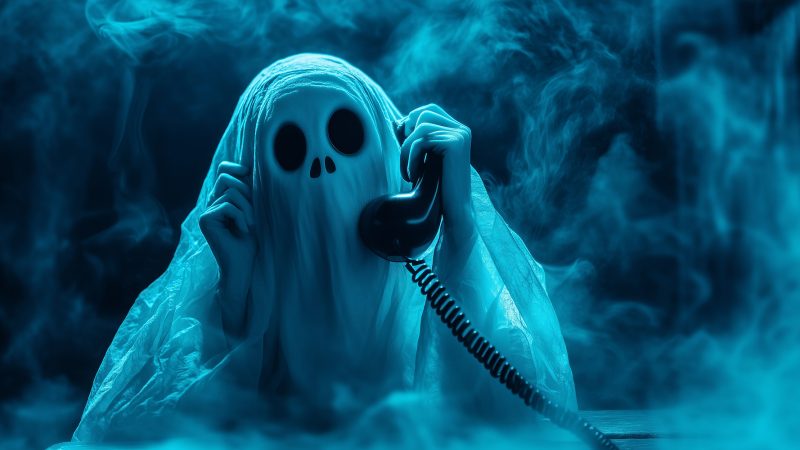
New zero-day used for effective kernel memory injection and stealth
Duqu 2.0: Frequently Asked Questions
Duqu 2.0 Technical Paper (PDF)
Indicators of Compromise (IOC)
Yara rules
Press release
Earlier this year, during a security sweep, Kaspersky Lab detected a cyber-intrusion affecting several of our internal systems.
Following this finding, we launched a large scale investigation, which led to the discovery of a new malware platform from one of the most skilled, mysterious and powerful groups in the APT world – Duqu. The Duqu threat actor went dark in 2012 and was believed to have stopped working on this project – until now. Our technical analysis indicates the new round of attacks include an updated version of the infamous 2011 Duqu malware, sometimes referred to as the stepbrother of Stuxnet. We named this new malware and its associated platform “Duqu 2.0”.
Some of the new 2014-2015 Duqu infections are linked to the P5+1 events and venues related to the negotiations with Iran about a nuclear deal. The threat actor behind Duqu appears to have launched attacks at the venues for some of these high level talks. In addition to the P5+1 events, the Duqu 2.0 group has launched a similar attack in relation to the 70th anniversary event of the liberation of Auschwitz-Birkenau.
In the case of Kaspersky Lab, the attack took advantage of a zero-day in the Windows Kernel, and possibly up to two other, currently patched vulnerabilities, which were zero-day at that time. The analysis of the attack revealed that the main goal of the attackers was to spy on Kaspersky Lab technologies, ongoing research and internal processes. No interference with processes or systems was detected. More details can be found in our technical paper.
From a threat actor point of view, the decision to target a world-class security company must be quite difficult. On one hand, it almost surely means the attack will be exposed – it’s very unlikely that the attack will go unnoticed. So the targeting of security companies indicates that either they are very confident they won’t get caught, or perhaps they don’t care much if they are discovered and exposed. By targeting Kaspersky Lab, the Duqu attackers probably took a huge bet hoping they’d remain undiscovered; and lost.
At Kaspersky Lab, we strongly believe in transparency, which is why we are going public with this information. Kaspersky Lab is confident that its clients and partners are safe and that there is no impact on the company’s products, technologies and services.
Duqu 2.0 – Indicators of Compromise (IOCs)
MD5s
Action loaders:
089a14f69a31ea5e9a5b375dc0c46e45
16ed790940a701c813e0943b5a27c6c1
26c48a03a5f3218b4a10f2d3d9420b97
a6dcae1c11c0d4dd146937368050f655
acbf2d1f8a419528814b2efa9284ea8b
c04724afdb6063b640499b52623f09b5
e8eaec1f021a564b82b824af1dbe6c4d
10e16e36fe459f6f2899a8cea1303f06
48fb0166c5e2248b665f480deac9f5e1
520cd9ee4395ee85ccbe073a00649602
7699d7e0c7d6b2822992ad485caacb3e
84c2e7ff26e6dd500ec007d6d5d2255e
856752482c29bd93a5c2b62ff50df2f0
85f5feeed15b75cacb63f9935331cf4e
8783ac3cc0168ebaef9c448fbe7e937f
966953034b7d7501906d8b4cd3f90f6b
a14a6fb62d7efc114b99138a80b6dc7d
a6b2ac3ee683be6fbbbab0fa12d88f73
cc68fcc0a4fab798763632f9515b3f92
Cores:
3f52ea949f2bd98f1e6ee4ea1320e80d
c7c647a14cb1b8bc141b089775130834
C&C IPs
182.253.220.29
186.226.56.103
To check your network for Duqu’s 2.0 presence, you can also use the open IOC file available here.
The Mystery of Duqu 2.0: a sophisticated cyberespionage actor returns





















Denis V
“the Duqu 2.0 group has launched a similar attack in relation to the 70th anniversary event of the liberation of Auschwitz-Birkenau.”
What does that even mean?
Bb
There was a large event in Poland, near Krakow and the camps. I suspect they mean the related conferences or events were targeted.
Craig
Try the Wired article for a non technical explanation focused on what was done & why.
X
It means that attendees at the event were targeted by the malware.
leon
It was a concentration camp during WWII where many jews and other not “arians” were murdered by nazis
Cody
If this appears twice I apologise. I had scripts disabled and it didn’t show up after posting, so I’m trying with scripts enabled.
—
Firstly, you’re ignoring context. Context is rather important. He means what does this attack or any malware attack have to do with a historical event (or similar such thing). That is to say, he didn’t ask what it was; he asked what it means, here.
Secondly, it is Aryan and not ‘arian’. Why do I point this out? Because you’re ignoring context and then being pedantic over your statements (that would be irrelevant if you paid attention to the context). So why shouldn’t I be pedantic over things that are relevant to what you state (although you’re also wrong in some other parts, see below)? Also, while it is true it was during WW 2, the fact is it was more specifically part of the Holocaust. In addition, concentration camps were opened before the war started, just as an aside (not that Auschwitz is one of them).
Finally, it wasn’t just those who weren’t Aryans. Remember that Hitler wasn’t an Aryan himself, and remember also that they accepted those who were very convenient to them. For example, they were fine with the fact that Ernst Röhm (and he was a Nazi, part of the SA!) was a homosexual until he wasn’t needed or useful. Then came Night of the Long Knives. They also held political prisoners.
Of course, none of that is actually relevant to this article, is it? No, it isn’t but since you brought it up, I figured I’d finish it (actually, there’s a lot more so I use the word ‘finish’ loosely) for your proper.
Arnie Shore
Re why bother with ‘Aryan’ versus ‘arian’? IMO if you can’t get the easy stuff right, including spelling, why should we trust you on the difficult stuff?
Googleit
It is a subtle implication for the origins of duqu and duqu2. think who cares about the liberation of Auschwitz Birkenau. of course this could be considered a conspiracy, but hey – blame it on the Jews, who cares, right?
Vin
Leave the politics elsewhere, nobody cares.
Robert Fay
GOOD STUFF – KEEP IT UP KL !!!
Barry
Greate job!
Did you use EMET on your workstations to be more protected against unknown exploits?
Should we expect code changes or new features in KL products to be protected against technic used by Duqu 2?
How to protect corporate networks against such threads if AV companies are not able to protect own networks? :-/
Kaspersky Labs Supporter
Nothing is 100% secured in this world. Start using your brain first.
Their software, Kaspersky Internet Security, will detect the Duqu malware so customers are protected. It was definitely a dumb thing to think that such a large, reputable company wouldn’t uncover this.
Like Kaspersky said: whoever created the malware will be licking their wounds now that such a ‘valuable’ virus has been detected and blocked.
For something so complicated it has to be a state actor. Going public was definitely the right thing to do. Who knows other AV companies may have been attacked and have chosen not to go public.
Dio
I’m also wondering if you guys (or patient zero) were using EMET at the time of the attack – for Microsoft apps.
Costin Raiu
Unfortunately, there are no mitigation strategies for cve-2015-2360 – EMET can’t stop it either.
ropchain
EMET will not stop a TTF 0day like CVE-2014-4148, although Kaspersky did not provide information about a possible infection method.
One way to prevent the exploitation of TTF zero-day vulnerabilities is by disabling the loading of custiom fonts in IE and Office. Microsoft posted a way of denying access to T2EMBED.DLL in their MS14-058 patch advisory: https://technet.microsoft.com/en-us/library/security/ms14-058.aspx
From the MS Advisory:
For 32-bit systems, enter the following command at an administrative command prompt:
Takeown.exe /f “%windir%\system32\t2embed.dll”
Icacls.exe “%windir%\system32\t2embed.dll” /deny everyone:(F)
For 64-bit systems, enter the following command at an administrative command prompt:
Takeown.exe /f “%windir%\system32\t2embed.dll”
Icacls.exe “%windir%\system32\t2embed.dll” /deny everyone:(F)
Takeown.exe /f “%windir%\syswow64\t2embed.dll”
Icacls.exe “%windir%\syswow64\t2embed.dll” /deny everyone:(F)
Steven Rapone
You need to have several layers of advanced defenses in place starting at the e-mail gateway since ~90% of all malware attacks are delivered via e-mail. Signature based AV simply doesn’t work.
Bongo the Dragon
Any slightly aware person will realize by now all computing is compromised, even and especially those running fancy anti-virus technology.
As for the average person…
Jahangir Alam
Awsome! Keep it up.
Stuart Smith
Next Gen doesnt rely on signatures, I’d be interested to see if it can get past Cylance
Swank
Highly likely Cylance would fail…
https://arstechnica.com/information-technology/2017/04/the-mystery-of-the-malware-that-wasnt/